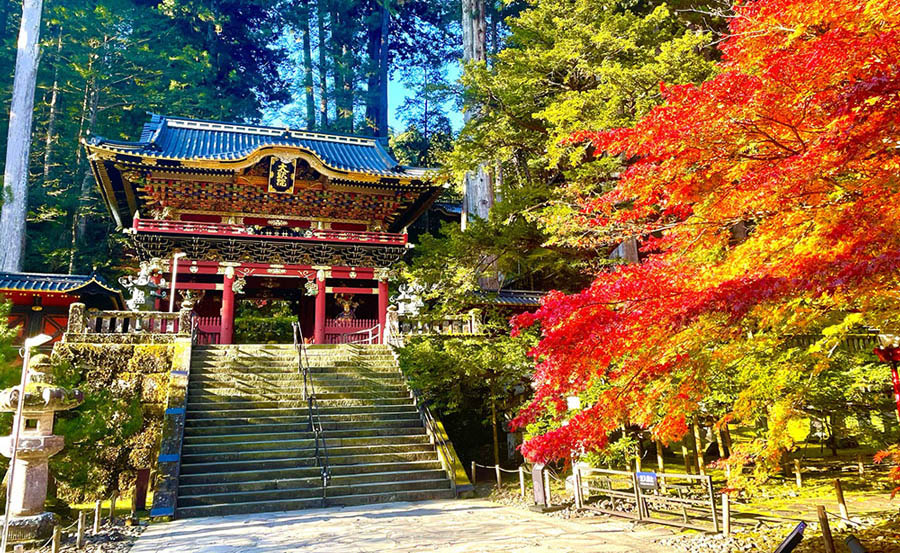Introduction
Nestled in the historic city of Nikko, Tochigi Prefecture, Taiyuin (大猷院) stands as a magnificent testament to Japan’s feudal past. This extraordinary mausoleum of Tokugawa Iemitsu, the third shogun of the Tokugawa family and grandson of Tokugawa Ieyasu, is more than just a historical site—it’s a masterpiece of architectural and cultural significance.
Highlights
- Unique blend of Buddhist and Shinto architectural elements
- Stunning vermilion Niomon Gate
- Famous white dragon sculpture
- Exquisite gold-lacquered pillars and intricate interiors
- Proximity to the renowned Toshogu Shrine
Historical Background
Taiyuin serves as the mausoleum of Tokugawa Iemitsu, the third Tokugawa shogun and grandson of Ieyasu. Intentionally designed with a more modest approach compared to Toshogu Shrine, the mausoleum reflects deep respect for his grandfather. Before the Meiji Restoration, religious sites in Japan often combined Buddhist and Shinto elements, and Taiyuin stands as a perfect representation of this unique historical period.
Key Attractions
Niomon Gate
This vibrant vermilion gate marks the entrance to Taiyuin, inviting visitors to embark on a journey through Japan’s feudal history. The gate sets the tone for the architectural marvel that lies ahead.
Nitenmon Gate
Guarded by two heavenly kings, this gate showcases the exceptional craftsmanship of the Edo period. Intricate details and symbolic guardians transport visitors to a bygone era of artistic excellence.
Drum Tower and Bell Tower
Symmetrically positioned on the left and right, these towers exemplify the architectural balance and aesthetic principles of the time, adding to the site’s historical charm.
Karamon Gate
Famous for its white dragon sculpture adorning the transom, this gate is a masterpiece of artistic expression. The dragon symbolizes power and dignity, serving as one of Taiyuin’s most captivating artistic elements.
Haiden (Worship Hall) and Honden (Main Hall)
Visitors can explore the lavish Haiden, admiring its elegant coffered ceiling, intricate carvings, and gold-lacquered pillars. Although the Honden can only be viewed from the outside, the combined structures create a grand and dignified facade.
Best Time to Visit
- Spring (April-May): Cherry blossoms in full bloom
- Autumn (October-November): Stunning fall foliage
- Recommended to avoid peak summer tourist season and cold winter months
Getting There
- Located approximately 200 meters west of Toshogu Shrine
- Accessible by bus from JR and Tobu Nikko Stations (10-minute ride)
- 30-40 minute walking distance
- Nikko Passes available, covering transportation and entry fees
Opening Hours and Admission
- Hours: 8:00-17:00 (8:00-16:00 from November to March)
- Ticket Prices:
- Taiyuin Only: 550 Yen
- Taiyuin + Sanbutsudo Hall: 900 Yen
- Last entry 30 minutes before closing
- Open year-round, no fixed closure days
Visitor Tips
- Wear comfortable walking shoes
- Allow 2-3 hours for exploration
- Maintain silence and respect the religious site
- Follow photography guidelines
- Dress warmly during winter
- Consider purchasing tickets in advance to avoid queues
Official Website
Conclusion
Taiyuin is more than a historical site—it’s a living narrative of the Edo period, told through breathtaking architecture and artistry. Whether you’re a history enthusiast, architecture lover, or travel adventurer, this cultural gem promises an unforgettable experience that bridges past and present.

Leave a Reply